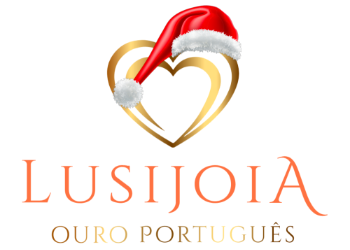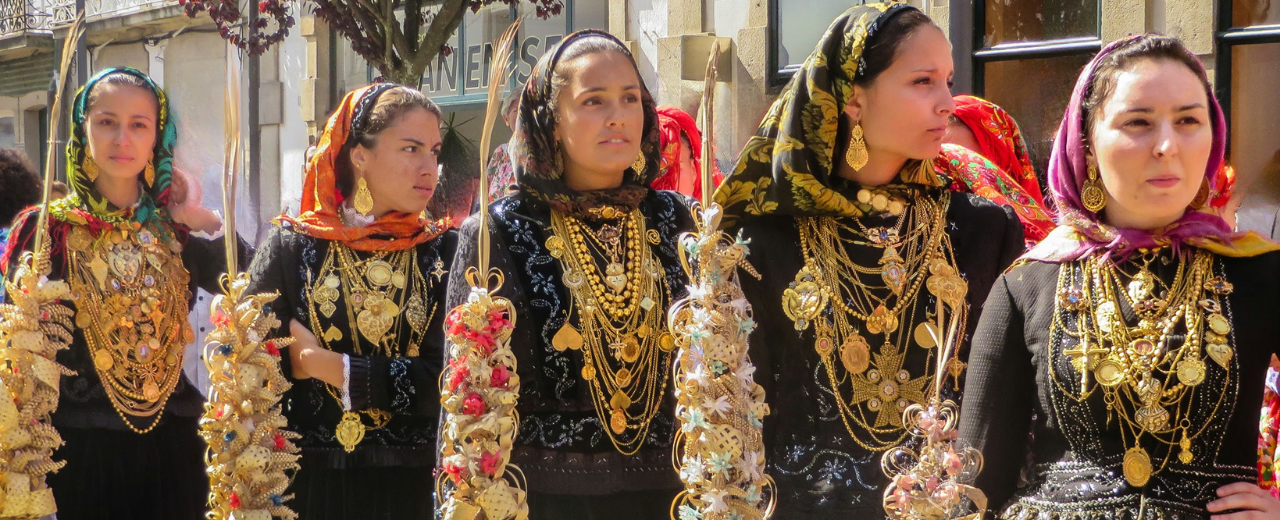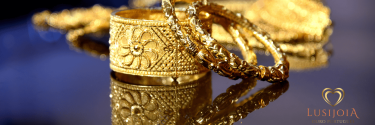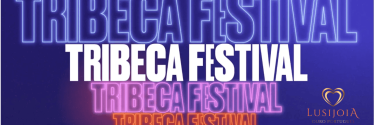Parades and Processions: The Filigree in Movement
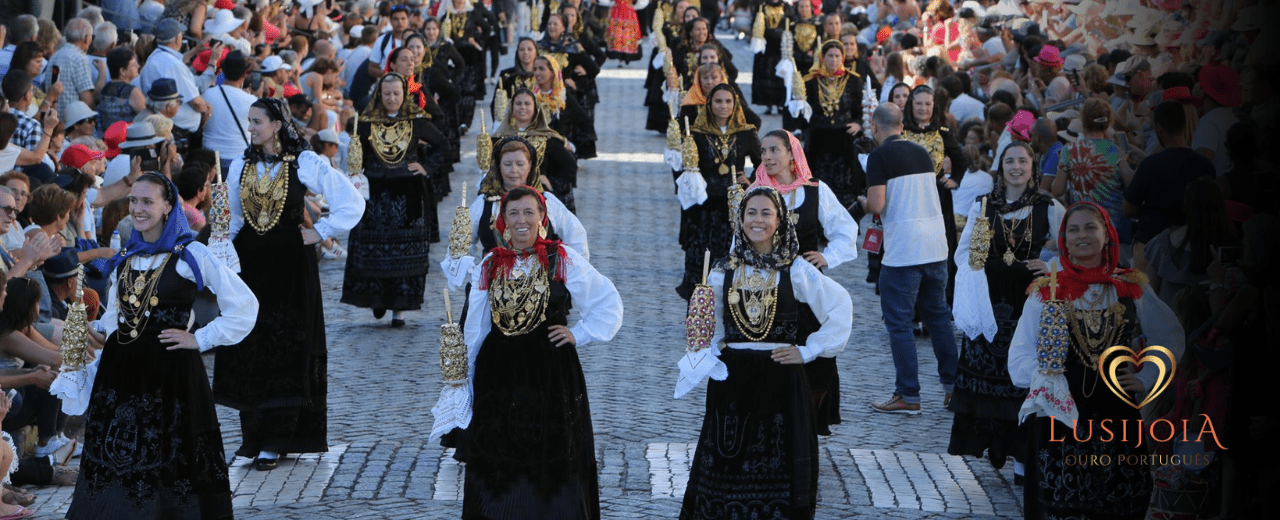
The traditional festivals of Minho are a true spectacle of color, devotion and joy. These celebrations, deeply rooted in the culture and faith of local communities, are times when traditions remain alive and regional pride is displayed in all its glory. In particular, the Festas da Senhora da Agonia, in Viana do Castelo, and other religious celebrations throughout the region, are occasions where Portuguese filigree shines brightly, literally in movement.
The parades and processions of the Minho festivals, especially the Festas da Senhora da Agonia, are moments in which the filigree reveals itself in all its splendor. These events are a celebration of Portuguese faith, tradition and art, where each piece of filigree tells a story, each gleam of gold or silver reflects the light of devotion, and each delicate detail symbolizes the continuity of a cultural heritage that is at the same time old and always new. Filigree, in this context, is more than a jewel, it is a symbol of Portugueseness, a link between the past and the present that continues to be celebrated in every festival, in every procession and in every Minho heart.
The Filigree: Living Jewel of the Minho Festivals
Filigree, with its delicacy and complexity, is one of the most traditional forms of Portuguese goldsmithing. This technique, which involves the meticulous twisting of very thin gold or silver threads to form intricate patterns, is a symbol of cultural identity in Minho. Filigree pieces, such as hearts, crosses and medals, are often passed down from generation to generation, serving as family treasures that carry memories and traditions. During festivals and processions, these jewelry are not just adornments, but tangible manifestations of culture and devotion. The women and men of Minho, dressed in traditional costumes, are proud to display their best filigree pieces, often inherited from ancestors, creating a stunning setting where art and faith intertwine.
Festivities of Senhora da Agonia: The Pinnacle of Minho Festivities
The Festas da Senhora da Agonia, held in August in the city of Viana do Castelo, are one of the most emblematic events in Minho. This celebration, in honor of the patron saint of fishermen, is marked by parades and processions where filigree occupies a prominent place.
Desfile de Mayordomía
Uno de los momentos más esperados de las Festas da Senhora da Agonia es el Desfile de la Mayordomía. Este desfile es una verdadera muestra de riqueza cultural, donde cientos de mujeres desfilan por las calles de Viana do Castelo, ataviadas con sus trajes tradicionales y adornadas con exuberantes piezas de filigrana. Los mayordomos, que son las damas de honor de la fiesta, lucen imponentes collares, aretes, pulseras y alfileres de filigrana en el pecho y en las muñecas, reflejando el brillo del oro y la maestría de la artesanía portuguesa.
Procesión al Mar
La procesión al mar es otro momento emblemático de las fiestas, donde la imagen de la Virgen de la Agonía es llevada al mar bendiciendo las aguas y a los pescadores. Durante esta procesión, la filigrana acompaña la fe de los devotos, adornando las vestimentas de las mujeres que participan en la ceremonia. El brillo de las joyas contrasta con la serenidad del mar, creando un espectáculo visual que refleja la devoción y esperanza de la comunidad.
Other Festivals in Minho: Filigree in All Its Glory
In addition to the Festas da Senhora da Agonia, Minho is the stage for several other religious celebrations where filigree plays an important role.
Pilgrimage of São João d’Arga
The Pilgrimage of São João d’Arga, one of the oldest pilgrimages in Minho, takes place on the hill of São João d’Arga, in Caminha. This festival is known for its authenticity and the strong presence of filigree. Traditional costumes, richly decorated with filigree pieces, are a symbol of devotion and faith as pilgrims walk the steep paths to the sanctuary.
Feasts of Saint Bartholomew
Held in Ponte da Barca, the São Bartolomeu Festivals are also a landmark in the region. During these festivals, local women display their filigree jewelry in parades and processions, where devotion mixes with tradition. Filigree, with its intricate patterns, adds a touch of elegance and reverence to celebrations.
Festivities of Nossa Senhora da Peneda
The Festas de Nossa Senhora da Peneda, in Arcos de Valdevez, are another celebration where filigree is the protagonist. During the procession in honor of the patron saint, women wear their best filigree pieces, symbolizing faith and respect for tradition. The beauty of the jewels, combined with the mountainous landscape of the Peneda-Gerês National Park, creates a unique atmosphere of spirituality and natural beauty.
--------------------------------------------------------------------
The Filigree: A Living Heritage
The presence of filigree at Minho festivals is more than a display of wealth or aesthetics; it is an expression of identity, culture and faith. These pieces, often handcrafted and unique, carry generations of stories and are living testaments to Portuguese heritage.
Furthermore, filigree is an element that connects the past to the present, keeping alive a tradition that continues to enchant and captivate those who see it. At Minho festivals, the filigree comes to life, moving on the bodies of devotees, in harmony with the rhythms of the celebrations and in communion with the region's cultural landscapes.
